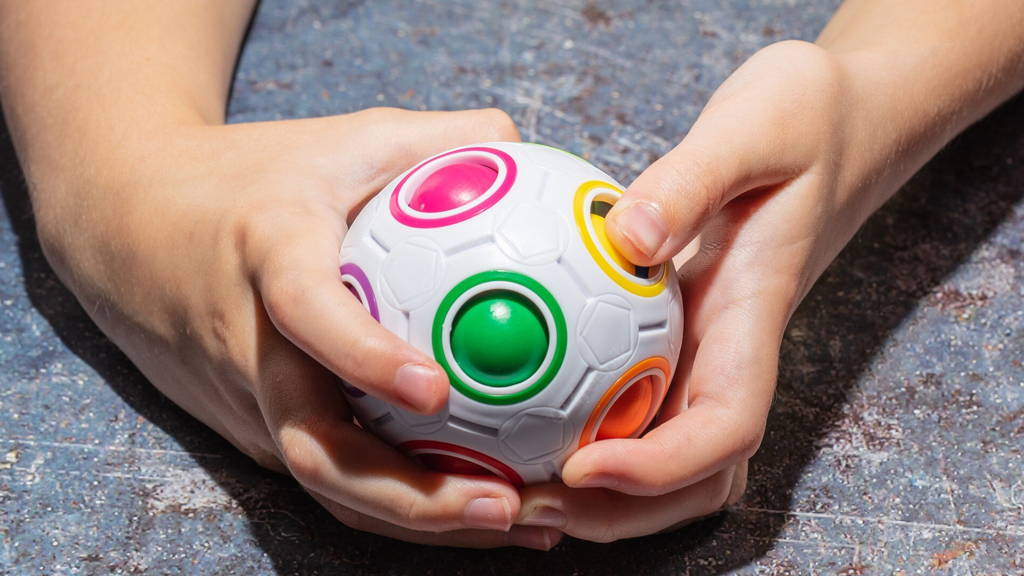One challenge that’s easy to overlook is the school cafeteria. Lunch rooms are not usually as monitored or structured as classrooms, making them something of a sensory free-for-all. While lunch can be a fun time to socialize and swap snacks, it can also be an overwhelming environment for sensory kids.
But don’t worry! Today, we’re looking at simple ways your sensory child can make the most of mealtime at school.
School Lunch Room Sensory Overload
Think back to your school lunch room as a kid. If your childhood was anything like ours, words like “loud,” “rambunctious,” and “fruit roll-up” come to mind. Kids generally look forward to lunch because it breaks up the day, gives them a chance to chat, and means they can fuel up with food.
But school cafeterias can be overwhelming whether you have sensory issues or not! They tend to be large rooms with dozens of people all talking at once. And that’s not even taking the sensory minefield of food into consideration.
Food-Related Sensory Issues
You’ve probably dealt with food-related challenges if you have a sensory child. Your child might be picky, selective, fussy, or downright dictatorial about what they will and will not eat! Then, there are the classic issues with texture and the dreaded possibility of one food item touching another.
To help a child with food-related sensory issues, try the following:
- Get input as you pack the lunch sack, or better yet–pack it with your child!
- Get the OK from your child before handing off their lunch box–you don’t want them going hungry at school
- If you have an extremely picky eater, accept that they might not be a good candidate for tray lunches
- Get a school-provided-lunch schedule so your child can eat tray lunch on the days when an “acceptable meal” is being served
- Start experimenting with new foods at home to diversify lunchtime possibilities
- Don’t let them leave home without food dividers so they can make their meal sensory-friendly no matter where they go
Offering various seating options in your class doesn’t have to break the bank. See what you have at home. Check if there are unused items around the school that might work. Yard sales and thrift stores are also excellent options for keeping the budget on track.
Flexible seating acknowledges that different kids have different learning styles and sensory needs. When each kid feels focused, safe, and alert, everyone benefits because the environment is ripe for learning and creativity.
Noise-Related Sensory Issues

Noise can be a real issue in school cafeterias. Kids, like anyone else, get excited about mealtime! For some kids, lunch is their favorite part of the day.
They might have the chance to sit with friends they don’t see in class or tell the story they’ve been dying to share. And as every parent knows–excited kids are loud kids!
So, the lunch room might be distressing if your child is super-sensitive to loud noises or overlapping conversations.
You can help out with the following:
- Wireless Earbuddies aren’t just for music! They can mute noise while still letting your child hear their nearby friends
- Talk to your child about choosing a table that’s off to the side (instead of dead-center) and encourage them to ask friends to join them in a quieter spot
- Talk to your child about sitting in a spot that’s near the restroom–this way, they can step out for a few minutes if needed
Crowd-Related Sensory Issues

Much like noise-related sensory issues, crowd-related issues can be hard to escape. But sensory-friendly strategies aren’t necessarily about getting away; they’re about finding a way to live, move, and be in the world while still honoring boundaries and needs.
If your child gets anxious in crowds, refer back to some of the noise-issue techniques. Sitting by a wall rather tha`n in the middle of the cafeteria can be a huge help. Also, sitting near an exit can be comforting in case your child wants to reset in the bathroom.
Ensure your child has a fidget toy or chew necklace to access instant relief at lunch. Kids often eat their meal in a matter of minutes, leaving plenty of time to use their fidget ball or chewy necklace. These types of sensory tools are safe, soothing, and mood-boosting.
Conclusion: Surviving the School Lunch Room
Surviving the school lunch room doesn’t have to be a daily struggle! These tips and techniques can help your child look forward to the cafeteria and enjoy their meal with friends. Share your child’s unique needs with teachers and administrators so they can be on the lookout for ways to offer support.
As always, the Sensory Scout Community is here to lift you up with blogs, discounts, new products, and so much more. Don’t miss our other back-to-school articles, How to Overcome Common Back to School Challenges and Making a Sensory Informed Classroom.
 Skip to content
Skip to content

